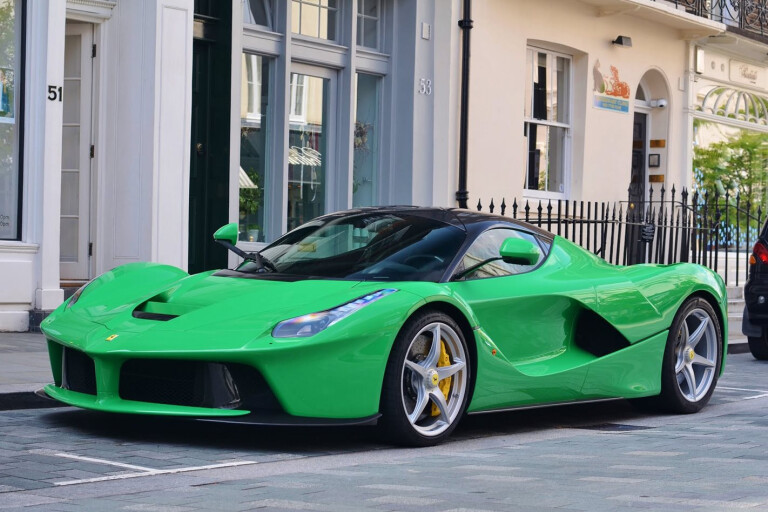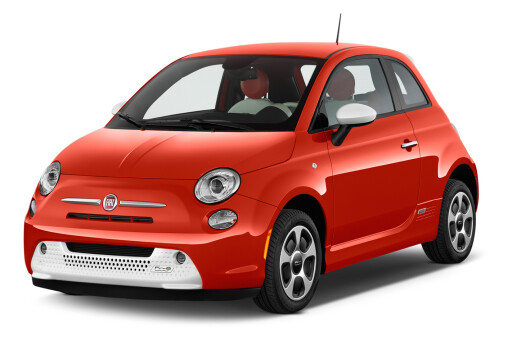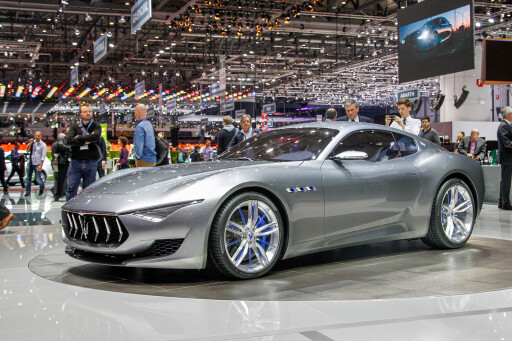
Sergio Marchionne, the CEO of Fiat Chrysler Automobiles has never been a fan of hybrid cars.
In 2014, he urged customers not to buy the Fiat 500e because the company lost $17,500 on every one they sold.
"If we just build those vehicles, we'll be back asking... in Washington for a second bailout because we'll be bankrupt," Marchionne said of electric cars.

Now it seems that FCA has reconsidered its position and reports state that it has plans for 50 percent of its entire fleet to be electrified in some way in five short years.
Let’s put that in perspective. FCA’s current ‘electrified’ roster of production cars comprises the reviled Fiat 500e and the Chrysler Pacifica plug-in hybrid. If you’re charitable you could add the LaFerrari to that list. That’s it. Marchionne hands over the reins to his successor in two years’ time, so he won’t be around to see the fruits of his labours. He’ll still be in charge at Ferrari until 2021, whereupon he’ll launch the SUV, but in the meantime, much of his attention will be devoted to the other Italian exotic marque in his charge, Maserati.
As part of FCA’s surge to electrification, Maserati is acting as its spearhead, with half of its wares being fast-tracked for electrification. So, it looks as if the Alfieri coupe is due to cop a hybrid drivetrain and future iterations of the Levante SUV will also follow suit. “Post-2019, [Maserati] will start launching vehicles which are all electric and which will embody what we consider to be state-of-the-art technology,” he said. By 2023 half of Maserati's vehicles will be electrified in one form or another.

“What makes [electrification] mandatory now is the fate of diesels,” he said, acknowledging the increasingly onerous legislative hurdles facing the technology.
“We have been reluctant to embrace that avenue until we saw clearer the path forward,” he admitted.
There are notable pitfalls ahead. Petrol-electric hybrids serve as a stop-gap measure that will help car makers retain access to many highly-regulated markets, but the road to full electrification is anything but straightforward. “If the cost of batteries doesn’t come down, there will be a huge increase in pricing in 2022, and that will cause shrinkage in demand,” Marchionne told investors. Asked if there was scope for FCA to bring battery production in-house, Marchionne was adamant that this was a non-starter. "Given the level of knowledge and depth of that knowledge that sits with other people in the industry, what right do I have to enter that space? None."

Looking at FCA’s current portfolio, there are a number of legacy vehicles and platforms that are set for retirement before 2022. The Maserati Alfieri’s architecture will migrate across the group, with the Pacifica’s PHEV technology adopted across brands too. Also, FCA has maintained for some time that it is investing heavily in 48-volt mild hybrids, which were an integral aspect of Volvo’s pronouncement on its post-2019 electric future.
The next FCA vehicle destined for the hybrid treatment is likely to be the next-generation Jeep Wrangler, but it remains to be seen how FCA rolls out the strategy on the volume part of its product range. Jeep and Fiat comprise nearly 60 percent of FCA’s sales. In order to hit the 50 percent target, those brands are where Marchionne’s going to get the biggest impact. Jeep’s 3-row Yuntu concept was unveiled in China in April in plug-in hybrid guise. It seems an impossible target, but FCA has set itself some lofty targets before, with some even being attained. It's possible that Marchionne's aims have been taken out of context and that a clarification will arrive.
One thing's for sure though. Marchionne might see electrification as a necessary evil but the die is now cast. We doubt he’ll be issuing any more ‘do not buy’ requests.
***UPDATE 04/08/17***
FCA's head office has issued a statement suggesting that Marchionne's words have been widely misconstrued. He is on record as saying "it's an integral part of the development of the group and I think it's an integral part of a broader strategy on electrification which will see more than half of its fleet by the time we hit the conclusion of the plan in 2022, it will see more than half of its fleet incorporate electrification." The use of the word group suggested that he was talking about FCA as a whole. The subsequent FCA clarification indicates that he was referring solely to the Maserati brand.

How is FCA faring against its 2013 five-year plan?
| Brand | 2013 | 2018 | % Growth |
| Chrysler | 350,000 | 800,000 | 128.6% |
| Dodge/SRT | 431,882 | 600,000 | 38.9% |
| Ram | 463,000 | 620,000 | 33.9% |
| Fiat Professional | 431,000 | 600,000 | 39.2% |
| Jeep | 732,000 | 1,900,000 | 159.6% |
| Fiat | 1,500,000 | 1,900,000 | 26.7% |
| Maserati | 15,000 | 75,000 | 400.0% |
| Ferrari | 7,000 | 7,000 | Capped |
| Alfa Romeo | 74,000 | 400,000 | 440.5% |
| GRAND TOTAL | 4,003,882 | 6,902,000 | 72.4% |
Three-fifths of the way through this planning period, it’s fairly clear that without a radical restructuring, FCA isn’t about to hit its global sales targets of 6.9m vehicles by 2018. Its annual report for 2016 shows that during that year its global sales were pegged at 4.7m, which is the same as 2015 and 100,000 down on 2014. In other words, it’s flatlining in what is a growth market overall.
Of its big brands, Jeep’s coming the closest to making the numbers, shifting just over 1.6m vehicles in 2016 and with new products coming on stream, it may well achieve the 1.9m ask. Ferrari’s already across the line, selling just over 9000 cars last year, with the proposed SUV rumoured to be capable of lifting sales to around 15,000 per year by 2021. Maserati sold close to 40,000 vehicles last year but Alfa Romeo remains the problem child, with little growth evident since 2013. That may well change with the introduction of the very strong Giulia and Stelvio products, but it needs a breakout year in the USA in 2017 to justify the big investments and the ambitious stretch targets.




COMMENTS